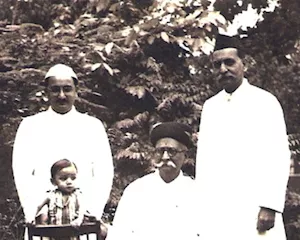With lith film being expensive and on the verge of obs olescence, TechNova’s PosiJet CtF solution is gaining acceptance not only in the newspaper segment but al so among packaging converters, finds out Priya Raju.
Launched in 2003, TechNova’s PosiJet, high density polyester inkjet film for computer-to-film (CtF) digital imaging, was initially targeted at newspaper industry as a CtF solution for making one-piece positives using an inkjet imaging device.
PosiJet has acquired many users from the newspaper industry at national as well as regional; some of the key newspapers who use the PosiJet include Rajasthan Patrika, Sahara India, Daily Thanthi, Sakal etc.
Parag Pimple, territory sales manager, CtP, TechNova Imaging Systems, says, “PosiJet has traditionally been used for making plate positives for newspaper printing. As the technology matured, we tried to enhance the media with improved properties to meet the requirements of screen printing as well as packaging applications.”
In the rigid packaging segment, there are several customers who are using PosiJet for printing keylines and proofing pharmaceutical inserts. They are Borkar Packaging, Temple Packaging, TCPL Packaging, Hi-Tech Printing Services, Shiv Offset, etc.
“PosiJet has become popular with printers who are dependent on expensive lith films, and cannot make the transition to thermal or violet CtP pre-press as yet,” adds Pimple.
Features
PosiJet is available in three different variants: InstaDry (ID), QuickDry (QD) and High definition (HD). While HD and QD are recommended for newspaper and screen printing applications, due to higher transparency, PosiJet ID is the ideal choice for printing keyline diagrams in rigid packaging. These films are available in roll form, in widths of 17-inch, 24-inch, 36-inch and 44-inch. The surface of the film is micro porous matte grained to ensure vacuum performance and image transfer.
Speaking about the speed of processing, Pimple said, “A full page (18x23-inch) keyline positive can be processed in approximately five minutes. The specialised film coating helps to encapsulate the ink, which results in instant drying.”
Thus, PosiJet is a dry computer-to-film solution, that eliminates the use of cameras, darkroom, imagesetter, processor or chemistry, and requires very minimal investment as compared to expensive lith films.
PosiJet film can be stored under normal air-conditioned environment, away from heat and humidity. The shelf life of the film is about one year.
Applications
One of the critical steps in packaging print production is the process of ensuring that all images and text to be printed fall within the keylines of the packaging.
“Traditionally, printers had to outsource this task to image processing houses, which in turn would print the keyline design of the pack on lith films, which, as we know has become exceedingly difficult to source and are available at exorbitant rates,” explains Pimple.
The use of butter paper or tracing paper, as a cheap alternative to lith films is also prevalent in the industry. However, as Pimple explains, “The butter paper can cause distortion of image as it tends to warp when it comes in contact with moisture, leading to inaccurate results.”
By printing keylines on PosiJet, using a compatible inkjet printer, packaging printers can verify the accuracy of keyline design specifications in-house. Pimple adds, “Since PosiJet is available off-the-shelf and is economical as compared to graphic art lith films, packaging printers can now have control of the keyline verification process.”
The PosiJet film can be printed with recommended inkjet devices. The user has to design the job using standard DTP software, rasterise the file using PoliRIP ripping software and fire it to the recommended inkjet printer for imaging on PosiJet.
Pimple feels that with more and more packaging printers realising that PosiJet is the ideal solution for making keylines, PosiJet will continue to serve this segment well into the future.
PosiJet is also used for proofing of pharmaceutical inserts, especially the medical literature.
Customer: Hi-Tech Printing Services
Mumbai-based Hi-Tech Printing Services, which specialises in inserts and outserts, has been using PosiJet film for past one and half years for proofing the fine text pharma material. Hi-Tech consumes about 100metres of PosiJet film monthly.
Shrikant Thakurdas, marketing manager at Hi-Tech, says, “We produce pharma inserts for export jobs where the medical text is down to 6 and 7 pt and in different languages such as Chinese and Hebrew. We were encountering bottlenecks for proofing this text ( comparing artwork to plate and plate to print) ”
Hi-Tech came up with the solution for this problem using PosiJet. “We first tried to handle this problem by superimposing positives over the prints and matching the two. However, it became difficult to detect the errors when we compared black on black.”
Thakurdas explains, “To simplify this job, we take prints on the PosiJet using Epson inkjet device with magenta colour and then superimpose this printed PosiJet film on the proofs. In this case it becomes easier to differentiate and the sheet checkers find it much easier to do their job.With traditional positive film becoming more or less redundant we needed a quick, reliable and in-house solution.”
|
Specifications |
|
Base Dimensionally stable clear polyester film
|
|
Thickness 100 microns |
|
Surface Microporus matte grained |
|
Size Available in all standard sizes |
|
Contact
TechNova Imaging Systems
Parag Pimple
paragp@technovaindia.com
+91 (0) 9769411161
Paul Joseph
paulj@technovaindia.com
+ 91 (0) 9920057762
www.technovaworld.com
|














 See All
See All